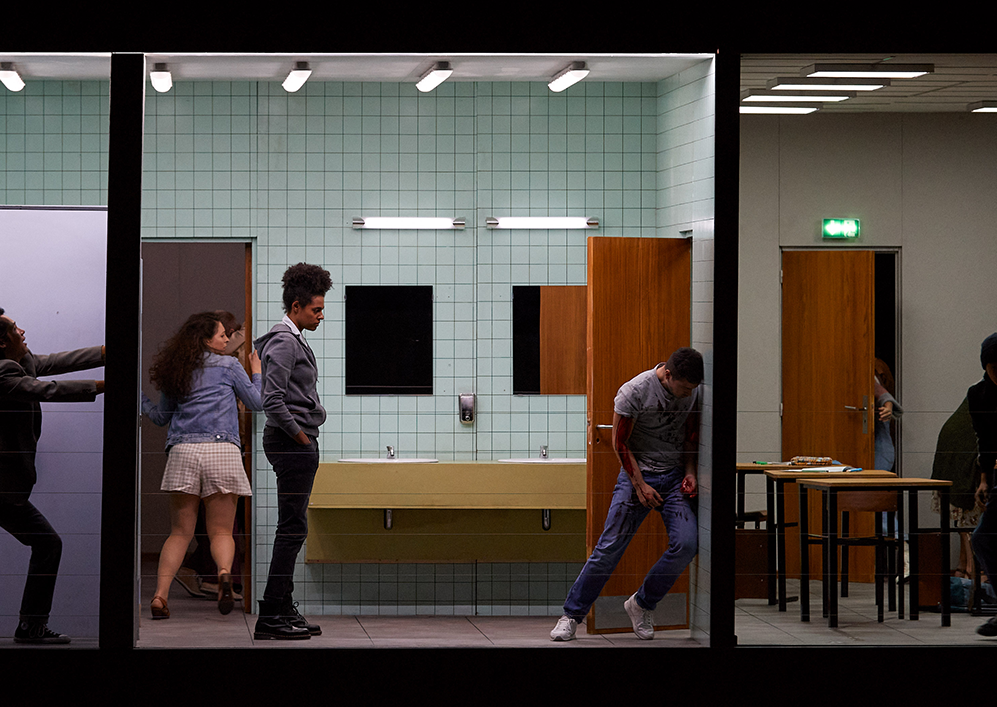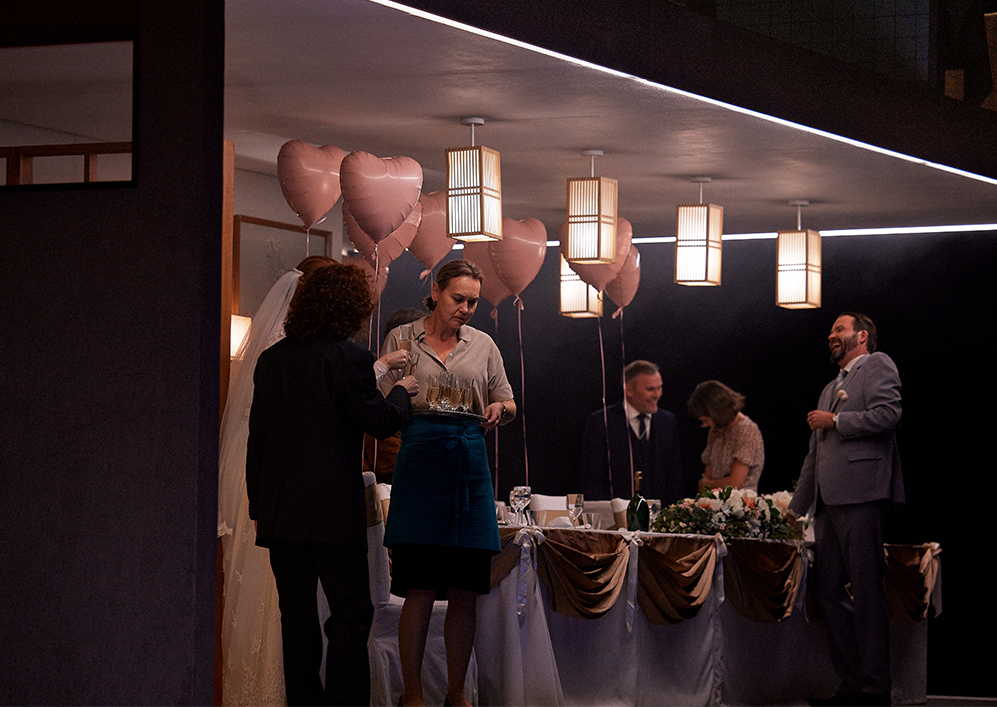
Kaija Saariaho: An opera composer who thought she was not suited to opera
The Finnish composer Kaija Saariaho (1952-2023) made a significant contribution to the development of contemporary opera with her intimate sound palettes and theatrical sensitivity. A portrait of a composer who initially thought herself unsuited to this art form.
Text: Laura Roling
Saariaho studied composition at the Sibelius Academy in Helsinki. She continued her studies at the Freiburg music academy in Germany and did summer courses in the modernist hub of Darmstadt. In 1982, she moved to Paris, where she worked on her further development at the avant-garde Institut de Recherche et Coordination Acoustique/Musique (IRCAM).
Spectralism
In Darmstadt, Saariaho became fascinated by spectralism — a school of composition that originated in France. It takes the entire spectrum of sound from pure tones to white noise as the raw material and arrives at new compositional results by analysing the components of the sound. Partly due to this influence, Saariaho’s work is characterised by an emphasis on timbre and the use of electronic instruments alongside traditional instruments.
She soon built up a strong international reputation with her compositions, thanks in part to their expressive power and sensory intensity. “For me, the visual and musical worlds are one,” said the composer herself. “Different senses, colour gradations, textures, tones of light and even aromas become mixed with sounds in my thoughts.”

Opera
The voice, which Saariaho called “the richest form of expression”, has always played an important role in her oeuvre. Despite this, for a long time she felt no urge to compose operas. She thought opera required a talent for telling stories through music, and that was something she felt she lacked. She changed her mind in 1992 when she saw a staging directed by Peter Sellars of Messiaen’s only opera, Saint François d’Assise, at the Salzburger Festspiele. This contemplative opera by Olivier Messiaen was quite different, a monumental interior drama showing mercy growing in the soul. Fascinated by Messiaen’s work, Saariaho decided, “If that’s opera, I can write one too”.
L’amour de loin
Saariaho’s first opera, L’amour de loin, premiered in Salzburg in 2000. With refined melodic lines and a lyrical warmth, the opera tells the story of the medieval troubadour Jaufre who dreams of an idealised love. This debut opera, with its sensitive, dreamlike score, was highly successful: since its premiere, it has been performed internationally in various productions — which is most unusual for a contemporary opera. In 2005, L’amour de loin was performed in Amsterdam as part of the Holland Festival, in a production directed by Pierre Audi.
Adriana Mater, Émilie en Only the Sound Remains
Four more operas followed. Saariaho’s Adriana Mater (2006), an opera about motherhood and violence during a civil war, is a forceful and poetic work for four vocal soloists. Her next opera was a return to more ‘dreamlike’ subject matter. Her monodrama Émilie (2010), written for the Finnish soprano Karita Mattila, explores the inner turmoil of the eighteenth-century philosopher and mathematician Émilie du Châtelet during her pregnancy. In Only the Sound Remains (2016), which had its world premiere at Dutch National Opera, Saariaho took Ezra Pound’s views on Japanese Noh theatre as the starting point for her creation of sensitive fairy-tale worlds.

New chapter
Innocence, which premiered in July 2021 in Aix-en-Provence, is a fascinating new chapter in Saariaho’s oeuvre for music theatre. Where in previous operas Saariaho had shown herself to be a virtuoso in creating a lyrical, meditative musical atmosphere, Innocence marks a change in direction with a much stronger narrative drive. The multilingual libretto, with nine different languages being spoken and sung, the relatively large cast of thirteen soloists and the exploration of various forms of expression in the human voice constituted a challenge that pushed Saariaho to produce an exceptionally rich, multifaceted work. For example, in addition to classical singing, Innocence features Sprechgesang (a style of dramatic vocalisation intermediate between speech and song), traditional Finnish folk singing and highly rhythmical spoken texts.
At the same time, Innocence is still unmistakably a Saariaho work, testifying to her ability to perform magic with sound. Thus the score includes lyrical motifs for the wind instruments, a pure sound from the strings and the sparkle of harp, percussion and celesta. The unseen choir forms a link between the orchestra and the soloists and contributes to the sound landscape with its enchanting hum and vocalisations. All in all, Innocence is the culmination of an impressive career.
KAIJA SAARIAHO ON INNOCENCE
The Last Supper
“A key source of inspiration for Innocence was Leonardo da Vinci’s Last Supper with its thirteen figures. Even before I came into contact with Sofi Oksanen (the librettist, ed.), I knew I wanted to confront different characters with the same basic situation and have them expressing a range of views, each in their own language.”
“We decided to have a wedding as the connecting theme, with echoes of da Vinci’s Last Supper. There would be bright, light scenes and dark scenes, each leading to different orchestrations and vocal approaches. I compiled a detailed plan that I kept on my desk throughout. Because I was only composing about fifteen seconds of music a day — I write my music for the entire orchestra from the start — it was really helpful to be able to look at my plan again every morning and know what point I had reached within the whole.”
Musical and vocal identity
“In all my operas, I generally try to create a specific musical and vocal identity for each of my characters. So with thirteen characters, I had to experiment with new possibilities. In the end, we filled the roles by drawing on a diverse range of profiles, from music-theatre actors to opera singers, because even the parts that appear to be closest to speech are in fact written out very precisely in the score. Another difficulty was the fact that Innocence features nine different languages, some of which I don’t speak.”
Maximum length
“I didn’t want this opera to be longer than an hour and forty-five minutes. There are masterpieces like Wozzeck or Elektra that manage to combine richness and power with a relatively short running time; I have never managed to figure out the mystery of their success, yet I wanted to try and compose a work with a similar form and spirit.”
Traditional Finnish singing style
“I became more interested in traditional folk music when I used the kantele (a traditional Finnish instrument, ed.) in Only the Sound Remains. I was working on expanding my palette for the use of the voice so I thought it would be good to have someone who sang in the style of this Finnish folk tradition. I went looking for that unique artistic personality, a search that was all the more difficult because she had to be young. I found her in Vilma Jää.”
- Derived from an interview with Kaija Saariaho by the dramaturg Timothée Picard, held in connection with the world premiere of Innocence in Aix-en-Provence (2021).